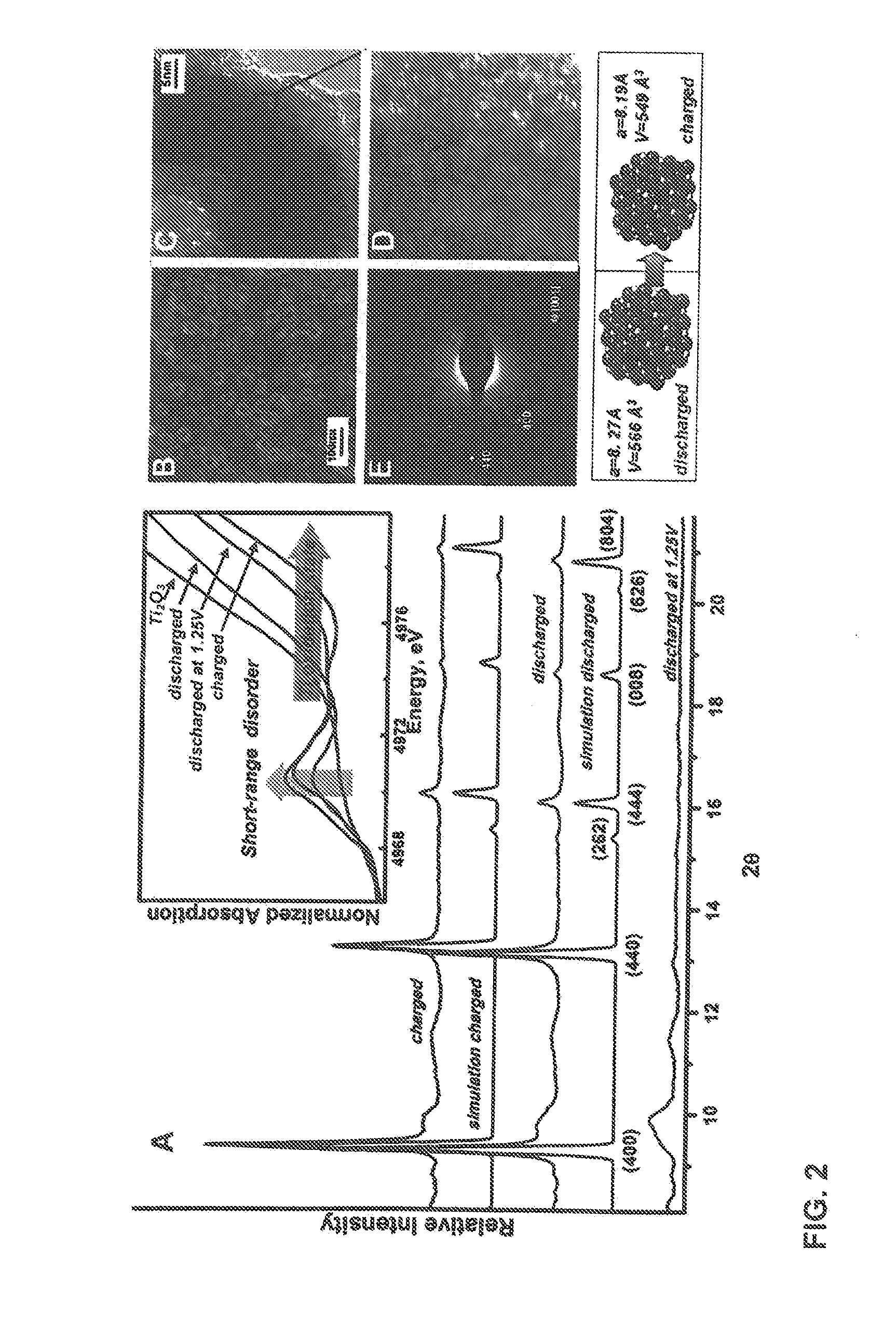High capacity electrode materials for batteries and process for their manufacture
- Summary
- Abstract
- Description
- Claims
- Application Information
AI Technical Summary
Benefits of technology
Problems solved by technology
Method used
Image
Examples
Embodiment Construction
[0044]The present invention provides new, more efficient electrode materials for lithium-ion and sodium ion batteries. In one embodiment, the present invention provides anodes for lithium-ion or sodium-ion batteries comprising a nanostructured amorphous titanium or vanadium oxide on a metallic substrate.
[0045]In one preferred embodiment the electrode comprises titanium dioxide nanotubes on a titanium metal (e.g., titanium foil) support. In another preferred embodiment, the electrode material comprises a bilayered V2O5 film on a metal (e.g., nickel) substrate.
[0046]Certain aspects and features of the present invention are illustrated by the following discussion, which is not to be considered as limiting.
[0047]Herein, we explore a new approach of creating high capacity / high power electrodes starting from an amorphous, disordered nanoscale material. Recently, it has been shown that increased concentration of interfacial regions in amorphous materials may form p...
PUM
| Property | Measurement | Unit |
|---|---|---|
| Electric potential / voltage | aaaaa | aaaaa |
| Electric potential / voltage | aaaaa | aaaaa |
| Electric potential / voltage | aaaaa | aaaaa |
Abstract
Description
Claims
Application Information
 Login to View More
Login to View More - R&D
- Intellectual Property
- Life Sciences
- Materials
- Tech Scout
- Unparalleled Data Quality
- Higher Quality Content
- 60% Fewer Hallucinations
Browse by: Latest US Patents, China's latest patents, Technical Efficacy Thesaurus, Application Domain, Technology Topic, Popular Technical Reports.
© 2025 PatSnap. All rights reserved.Legal|Privacy policy|Modern Slavery Act Transparency Statement|Sitemap|About US| Contact US: help@patsnap.com



